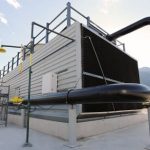Negative Emissions Technology May Solve Climate Change, But It’s Not Going To Be A Cakewalk For Sure
Negative Emissions Technology May Solve Climate Change, But It’s Not Going To Be A Cakewalk For Sure
195 nations across the world committed to confine global warming to two degrees above the pre-industrial levels during the 2015 Paris climate agreement. While it was considered by many as a landmark move in the war against human-induced climate change, there are many like Eelco Rohling, an eminent expert on oceans and climate change, who remain skeptical about the chances of meeting said objective unless drastic steps are taken to dispose of huge amounts of carbon dioxide from the atmosphere.

That is exactly where negative emissions technologies kick in. For starters, the term “negative emissions technology” encompasses an array of steps including reforestation projects, fertilizing the ocean with iron filings, seeding specific parts of the atmosphere with sulfates, and more.
While they definitely sound promising, negative emissions technologies have their fair share of critics who argue that these technologies will just grant industry owners and governments a license to carry on as usual. On the other hand, even with that aspect taken into account, there are many who are of the view that we no longer have a better alternative.
“Most things are not applied yet on larger scales but we have a pretty good feeling of things that will work and we can quantify roughly how much carbon we should be able to remove from the atmosphere with them,” says Rohling who is currently associated with the Australian National University’s research school of earth sciences, as reported by the Guardian.
It goes without saying that the scale of such tasks is painfully high, and that’s a view supported by experts such as Dr. Pep Canadell, a member of the global carbon project at CSIRO.
“The models are basically asking for removing carbon dioxide from the atmosphere which will be equivalent of one-quarter of all carbon emissions at present,” Canadell says.
For some perspective, for negative emissions technologies to make a substantial difference, stakeholders will require removing as much as 10 billion tons of carbon dioxide from the atmosphere every year.


The least controversial and possibly the most practical way to achieve that objective is by planting more and more trees. But even then, to make any notable change in the amount of carbon dioxide in the atmosphere, we will require reforestation projects of enormous scale.
“We would need as many as three Indias worth of land globally – and good quality land, not marginal land,” Canadell says.
Another big challenge would be the fact that reforestation will require massive amounts of water and it must be done in a way so it enriches the ecosystem rather than causing more harm to it.
Reforestation, however, is only one piece in a rather complicated strategy the proponents of negative emissions technologies have in mind. There are many other plans including the one that involves fertilizing the oceans with powdered iron or olivine.
Worth noting, as the carbon dioxide in the atmosphere reaches 400 parts per million for the first ever time in human history, some scientists and environmentalists are also pondering over the idea of directly capturing carbon dioxide from the atmosphere using huge versions of atmospheric scrubbers designed to remove CO2 from the air above and around us on board spacecraft.
The post Negative Emissions Technology May Solve Climate Change, But It’s Not Going To Be A Cakewalk For Sure appeared first on MobiPicker.
(32)














